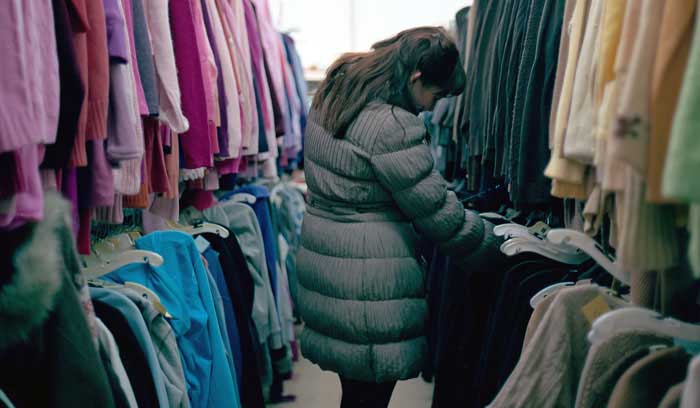In recent years, the notion of thrift shopping as both a financially and fashionably sensible strategy has re-entered American culture a spectacular way. Filtering from a variety of counterculture influences, and popularized in the late 2000s in a lurid, self-referential, hilariously absurd manner by American rap and hip hop duo Macklemore & Ryan Lewis, thrift shopping has shifted fluidly from the last resort of the financially destitute, to a vibrant element of popular and consumer culture. Of course, thrift shopping can be a risky game to play. You will often get lost in the racks of badly folded fabrics, you will rarely find the perfect fit, and you will never, ever know for sure how clean that $2.50 vintage Sex Pistols shirt really is. Nevertheless, the rise of thrift shopping as a viable alternative to designer brands has carried big implications for the intersection of originality, class performativity, and financial inclusivity in the fashion world. The “thrift shop” style not only revives a variety of excellent and frequently overlooked counterculture trends from the past—it also makes fashion accessible to those of us who cannot afford the big name brands that have dominated pop culture style for years.
The bohemian, Alphabet City influence of thrift shop fashion has always enjoyed a little-known but lively position on the margins of fashion, emerging by inches every few decades or so, with the rise of each new, rebellious aesthetic music. In the 1960s, it was a defining feature of the hippie movement: a generation of experimental artists, recreational drug users, and anti-war activists who rejected the capitalist ethos of the American military- industrial complex and the constraints of rigid gender roles by donning the worn, loose-fitting, brightly colored garments in which they travelled the country and lobbied for peace and harmony. In the late 1970s and early 1980s, the trend reemerged in the London punk scene, where men and women clad in used leather jackets, castoff denim jeans, and fraying shirts held together with safety pins, gathered in biker bars and underground clubs to listen to the likes of Joe Strummer, Sid Vicious, Paul Weller, and Poly Styrene. And just when it seemed that thrift fashion had faded away once again, it returned once more a decade later, at the height the mid-1990s grunge subcultures, when Kurt Cobain's thrift store boots and secondhand flannels defined the aesthetic of an era.
But despite the dynamic and resilient history of the style, it seemed that thrift shop fashion had met its demise at the hands of a new generation of wealthy rappers and hip hop performers who flaunt obscene amounts of money in music videos, with mind-bogglingly expensive clothing articles hanging off of their bodies, and designer labels emblazoned across their chests. In the rising popular culture ethos of the 2000s, it appeared that fashion had once again become the provincial territory of the wealthy and the privileged—until little-known performers like Macklemore came ambling onto the scene wearing lurid combinations of secondhand fur coats and used green shoes. The most wonderful part of this unexpected revival was not just the resurrection of the look that has been deeply loved in various subcultures, but also the manner in which fashion, trends, style, and aesthetic once again became accessible for the working class youth who could never have afforded the likes of Prada or Armani. Thrift shopping is back, and hopefully this time to stay—the style, like the clothes, will never be too worn for just one more wear.

